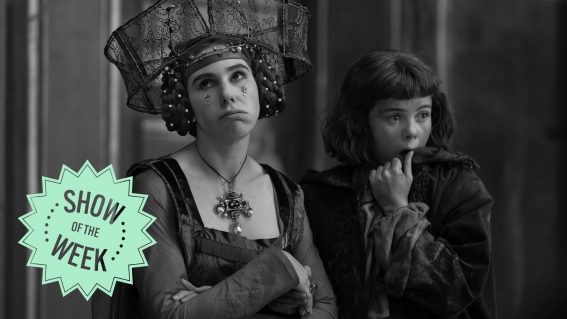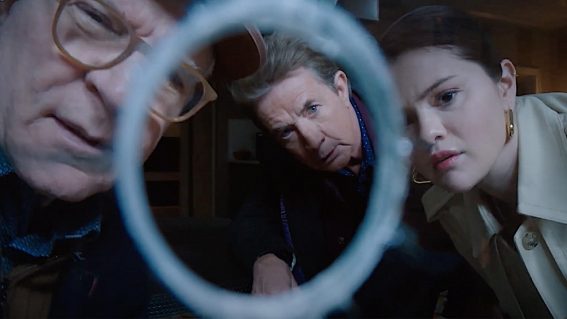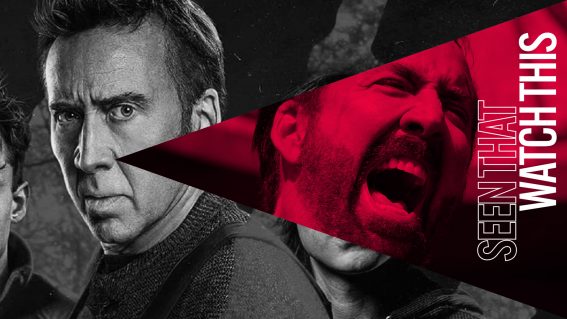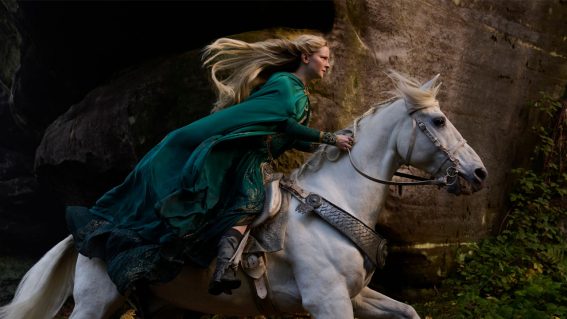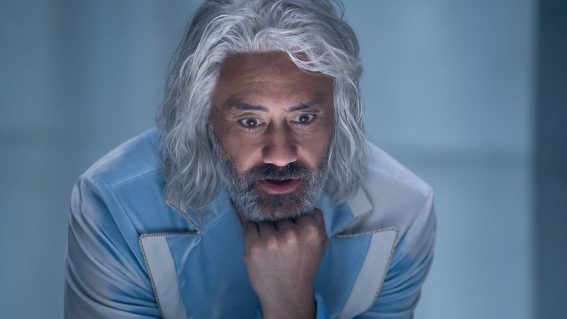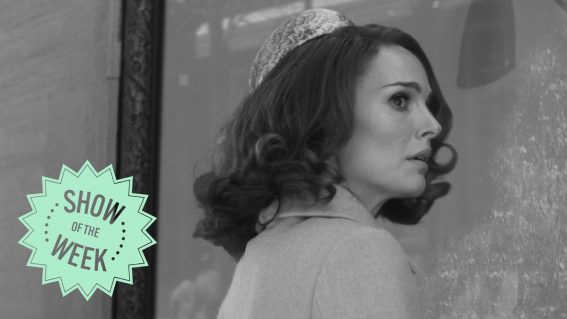12 things you need to know about atomic drama Oppenheimer
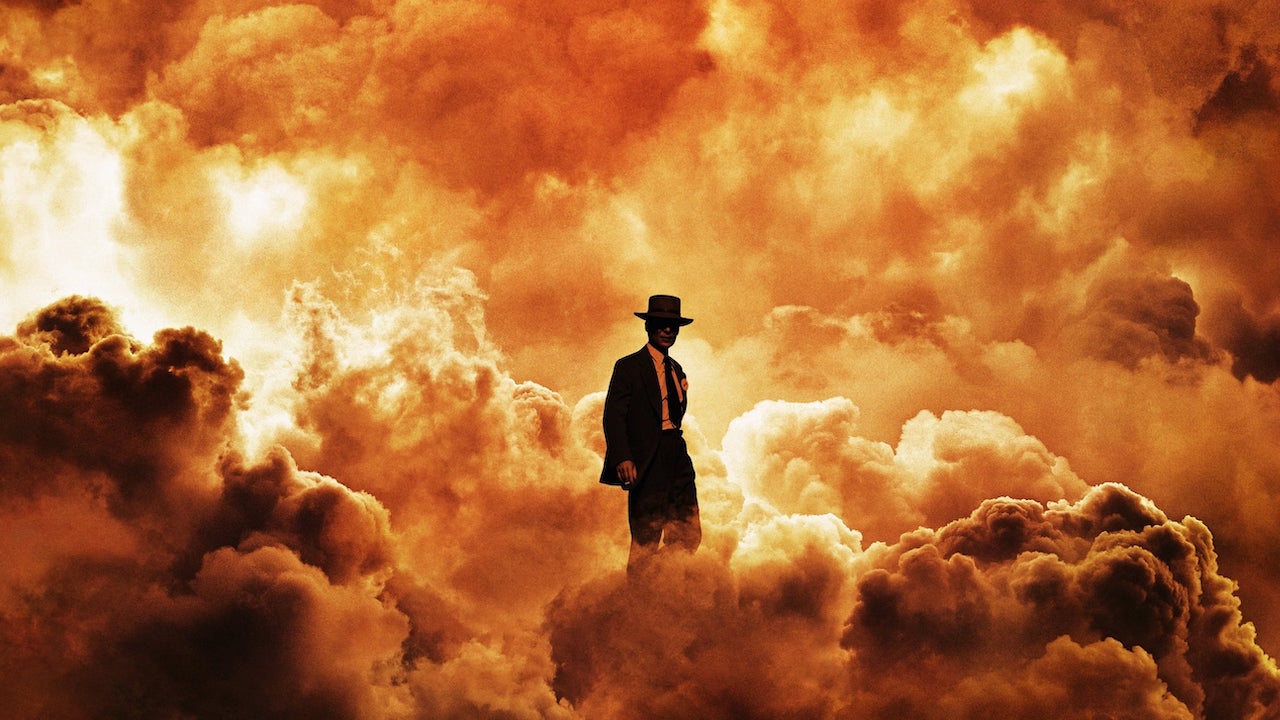
In between his high-concept sci-fi films like Interstellar and Tenet, director Christopher Nolan likes to take us back into the past: crafting period stories from The Prestige to his stunning war film Dunkirk. Yet across his filmography and in all of human history, Nolan considers the subject of his new film to be “the most important man who ever lived”.
Following the personal and professional life of legendary physicist J. Robert Oppenheimer, the historical biopic will intricately reveal the conception of the Manhattan Project, and its devastating impact on not just our modern world but also its troubled creator. Oppenheimer is going to be a big one, so here’s everything we know about it so far, from that stunning roll-call of celebrity talent to its complex IMAX production.
1. It’s a shame the movie isn’t coming out at 5:29 AM on July 16
Early promos for the newest Christopher Nolan film merely gave us a look at the titular character’s silhouette, shrouded in atomic clouds, and a live timer, counting down to one, significant second. July 16th is the 78th anniversary of the first detonation of an atomic weapon…so why is the movie coming out four days later?
The timing is especially odd as it pits Oppenheimer up against Barbie, a hilariously contrasting race to the top of the box office that has not gone unnoticed in countless memes. Proper attire for a July 20th double feature is all-pink-everything with a natty felt hat on top.

2. Cillian Murphy isn’t the first big-name actor to portray Oppenheimer
The historical drama marks the sixth collaboration between Murphy and Nolan, but somehow it’s only the first to feature the Peaky Blinders star as the lead role. The Irish actor made a big impact as the sinister Scarecrow in Nolan’s Batman films and as the poor bugger whose dreams got heisted in Inception. His distinctive, chiselled looks and aloof presence will work just great in his role as “the father of the atomic bomb”, but plenty of other terrific actors have been cast in the part, too, albeit in much lesser-known projects.
Sam Waterston donned the pork pie hat in a 1980 BBC serial with the same name as Nolan’s film. In 1989, two Oppenheimer-centric films were released: Fat Man and Little Boy, starring Dwight Schulz, and Day One, with David Straithairn as the nuclear weapons mastermind. A 2015 play about Oppenheimer’s life from the UK’s Royal Shakespeare Company also garnered strong reviews.
3. We know at least one line of dialogue that has to be included in the script
Sometimes a moment comes and goes, and you only think of the perfect clever quip for the occasion way later when you’re taking a shower or something. That’s not the case for J. Robert Oppenheimer, who eloquently summarised the terror and majesty of his pivotal Trinity Test right when it happened, reciting Hindu scripture the Bhagavad Vita to instantly express the world-shaking importance of the experiment before him.
In the above, bone-chilling clip from a 1965 TV appearance, the scientist seems to convey guilt, likening himself to a god of death—indeed, he would later admit to an infuriated President Harry S. Truman that he felt he had “blood on his hands”. But fellow physicist Isador Rabi (played in Nolan’s film by David Krumholtz) claims that Oppenheimer also felt victorious at the successful nuclear test: “I’ll never forget the way he stepped out of the car…his walk was like High Noon…this kind of strut. He had done it.”
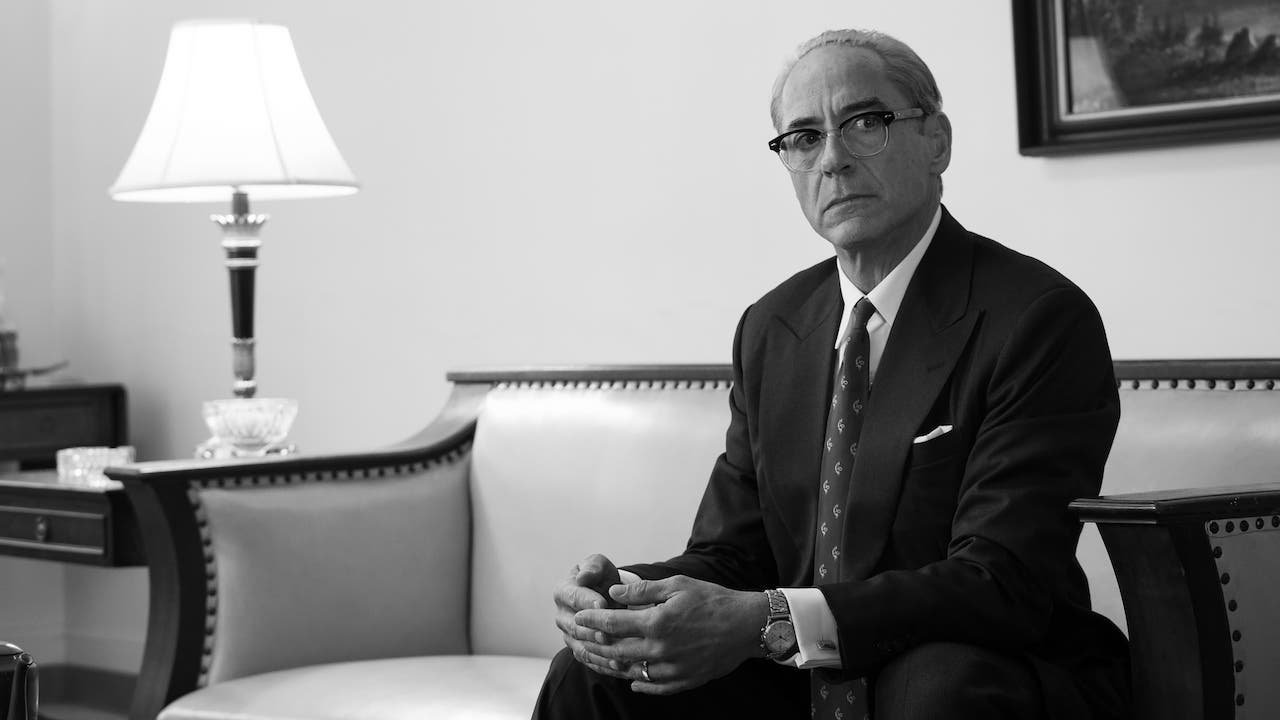
4. Famous faces in the (bloody massive!) cast literally didn’t know what they were signing up for
Do we even have space here to list out the full, starry cast featured in Oppenheimer? Let’s give it a crack: Robert Downey Jr. and Matt Damon play Lewis Strauss and Lt. General Leslie Groves, two government figures often at odds with Oppenheimer; Benny Safdie, Michael Angarano, Josh Hartnett, Matthew Modine, Jack Quaid, and Josh Peck play fellow physicists; Emily Blunt and Florence Pugh play Oppenheimer’s wife Kitty and mistress Jean respectively; and we don’t quite know where celeb stars Rami Malek, Dane DeHaan, Alden Ehrenreich, Casey Affleck, Olivia Thirlby, Jason Clarke, David Dastmalchian, Alex Wolff, and Kenneth Branagh fit in. Whew, exhale.
The Hollywood Reporter‘s sources say that “with Nolan’s secretive process, actors sometimes don’t even know what role they are signing up for until the deal is done”—meaning plenty of these established stars were so keen to be in a Nolan project of this magnitude, they didn’t need to know the nitty-gritty details of their parts in order to sign on.
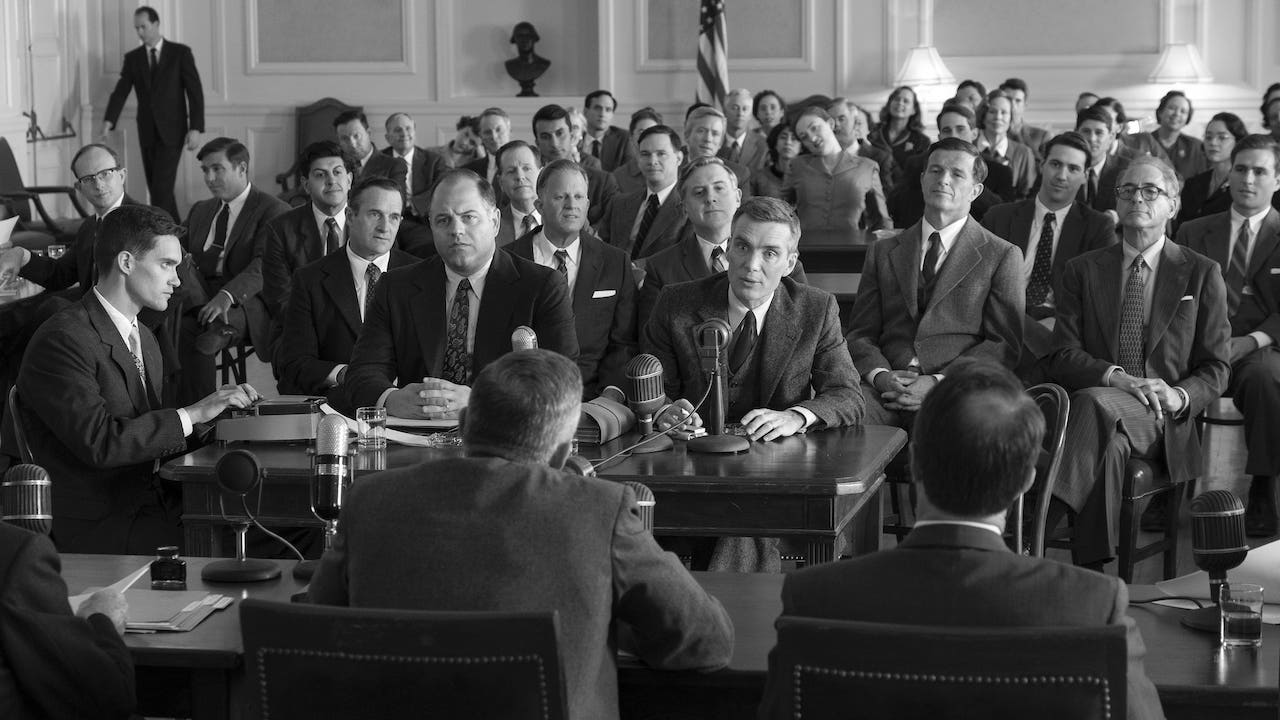
5. Oppenheimer was only officially exonerated by the US government last year
FBI director J. Edgar Hoover had been following Oppenheimer’s activities since before the war, and four years after the Trinity Test, Oppenheimer was dragged before the House Un-American Activities Committee to admit his apparent associations with the Communist party. His father Frank (played in the film by Dylan Arnold) made the same testimony, and was promptly fired from his university teaching position.
The real bomb, so to speak, would only drop in 1953, when Oppenheimer was accused of working as a Soviet agent and stripped of his prized security clearance. Which makes his exoneration by the US Government in 2022, nearly five decades after his death, quite the timely surprise. Maybe we’re being naive in noting this, but…it’s not impossible that news of a big Christopher Nolan blockbuster about the guy could’ve helped speed the reputation-rehab process along?
6. It’s Nolan’s longest film—and his first without Warner Brothers since Memento
Nolan’s Interstellar ran for two hours and 29 minutes, and he’s confirmed that Oppenheimer is “slightly longer than the longest we’ve done…it’s kissing three hours.” Perhaps Chris felt some freedom to go big with the historical biopic, since he’s working with a new studio and all.
The director’s long-standing relationship with Warner Brothers dissolved over the studio’s decision to drop Tenet onto streaming services earlier than Nolan would’ve liked. So rival company Universal was the way to go, beginning with the promise of a 100-day theatrical release window to let Oppenheimer shine in cinemas. The new collaboration also starts off with Nolan’s first R-rated film since 2002’s Insomnia, apparently for “language, sexuality and nudity”, which may involve Blunt and Pugh’s turbulent relationships with Murphy’s lead. Whatever Nolan wants, Nolan gets, it seems.
7. Oppenheimer is the first movie to use black-and-white IMAX photographic film
Get ready for both blistering, full-bodied colour filmmaking and stark black-and-white sequences, as Oppenheimer uses monochromatic film to cut to the truth of its protagonist’s story. Nolan has explained that in the film, “colour scenes are subjective” and “the black-and-white scenes are objective”—but they were also objectively difficult to capture, forcing Nolan and his team to develop a new form of IMAX film. It’s been reported that the rolls used to shoot Oppenheimer weigh as much as 600lbs, and stretch out to 11 miles of film.
In the clip above, which is kinda just an ad encouraging us to check out the film in an IMAX theatre, Nolan’s longtime fave cinematographer Hoyte Hoytema explains that IMAX’s expansive scope is often used for wide landscapes and action sequences. The filmmaker instead got curious about discovering IMAX “as an intimate format”, capturing faces rather than places.
8. Historical figures Truman and Einstein are played by Gary Oldman and Tom Conti
With a little prosthetic magic, Scottish actor Tom Conti looks freakishly similar to the genius behind the theory of relativity. In a fascinating 1965 speaking engagement, Oppenheimer spoke of the dark atomic impact that connects the two physicists: “Einstein is often blamed or praised or credited with these miserable bombs. It is not in my opinion true”.
If we had to guess, Einstein probably won’t appear in Oppenheimer too much, and the same goes for Gary Oldman’s cameo role as then-President Truman. Known in the Nolan-verse for his role as Commissioner Gordon in the Batman films, Oldman has revealed that he was only on set for about “one scene, a page and a half” of the feature’s lengthy script.
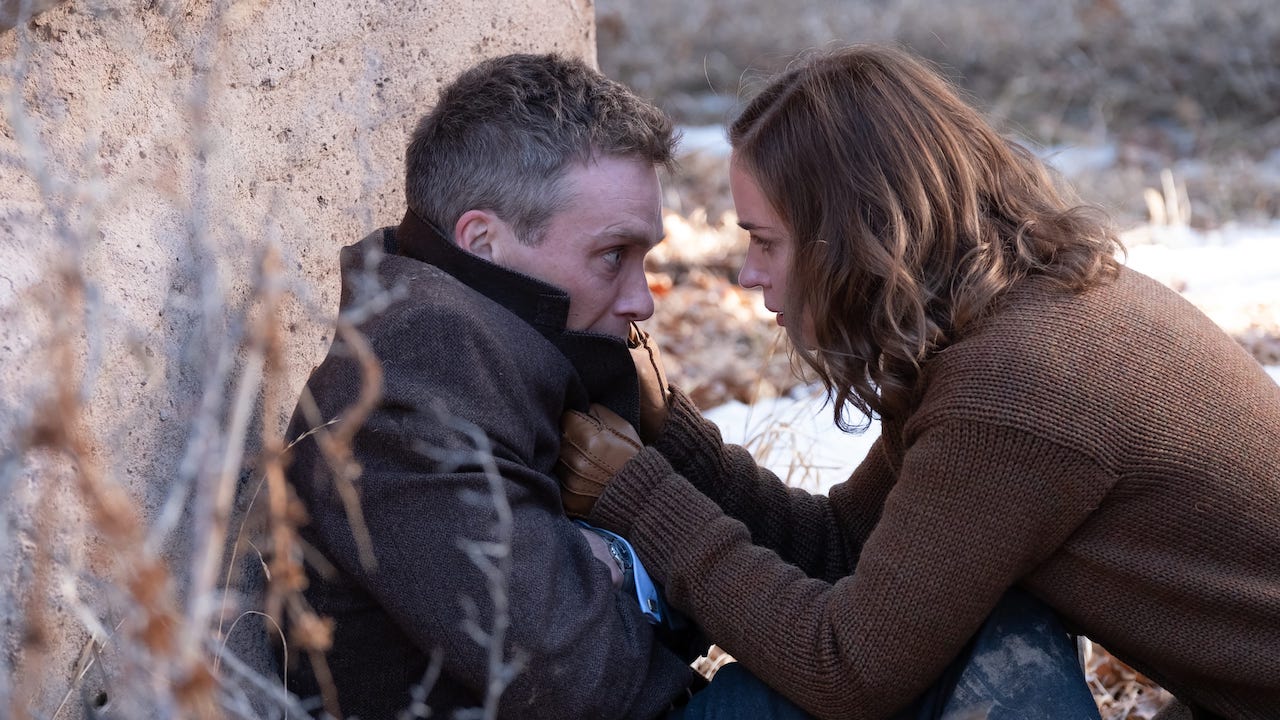
9. Tenet composer Ludwig Göransson returns to create the score
Much like Nolan’s break with Warner Brothers, the director seems to be doing just fine without the musical magic of past collaborator Hans Zimmer, who hasn’t worked on any of Nolan’s scores since choosing Dune over Tenet. Instead, Nolan has found a new bestie in Oscar-winner Ludwig Göransson. After earning an Academy Award for his work on Black Panther, the Swedish composer brought his skills to Tenet and Star Wars series The Mandalorian. But he didn’t have time to tackle the score for that show’s third season and Oppenheimer at the same time, wisely choosing to stick with Nolan.
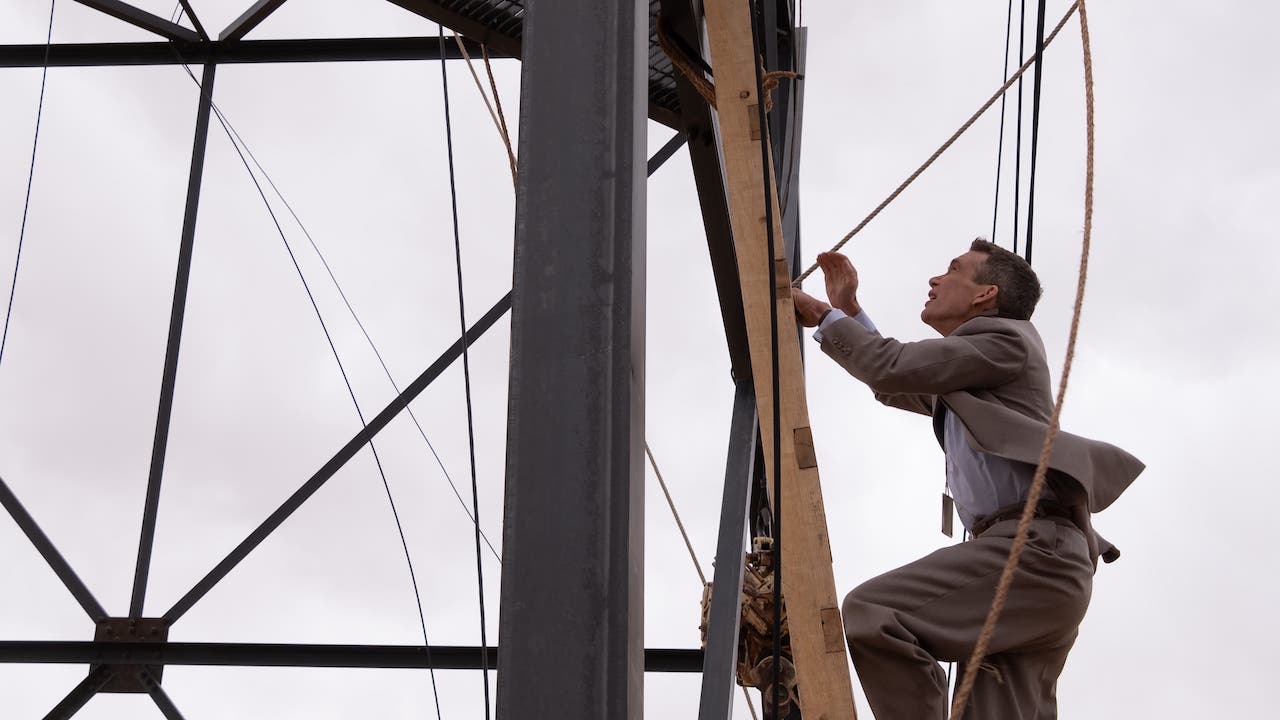
10. Production took place in New Mexico—the very site of the Trinity Test in 1945
Back in January of last year, a two-day casting call gave the residents of Santa Fe and Los Alamos the surreal chance to appear as extras in their own city’s explosive past. Oppenheimer’s 1945 Trinity Test took place in nearby Alamogordo, but the most eerily accurate location has to be the Oppenheimer family home in Santa Fe, which Nolan and his team were lucky enough to utilise as a set in the film. Over in California, UC Berkeley’s campus had to be visually transported back in time to reflect the campus’s appearance back when Oppenheimer would’ve been a professor there.
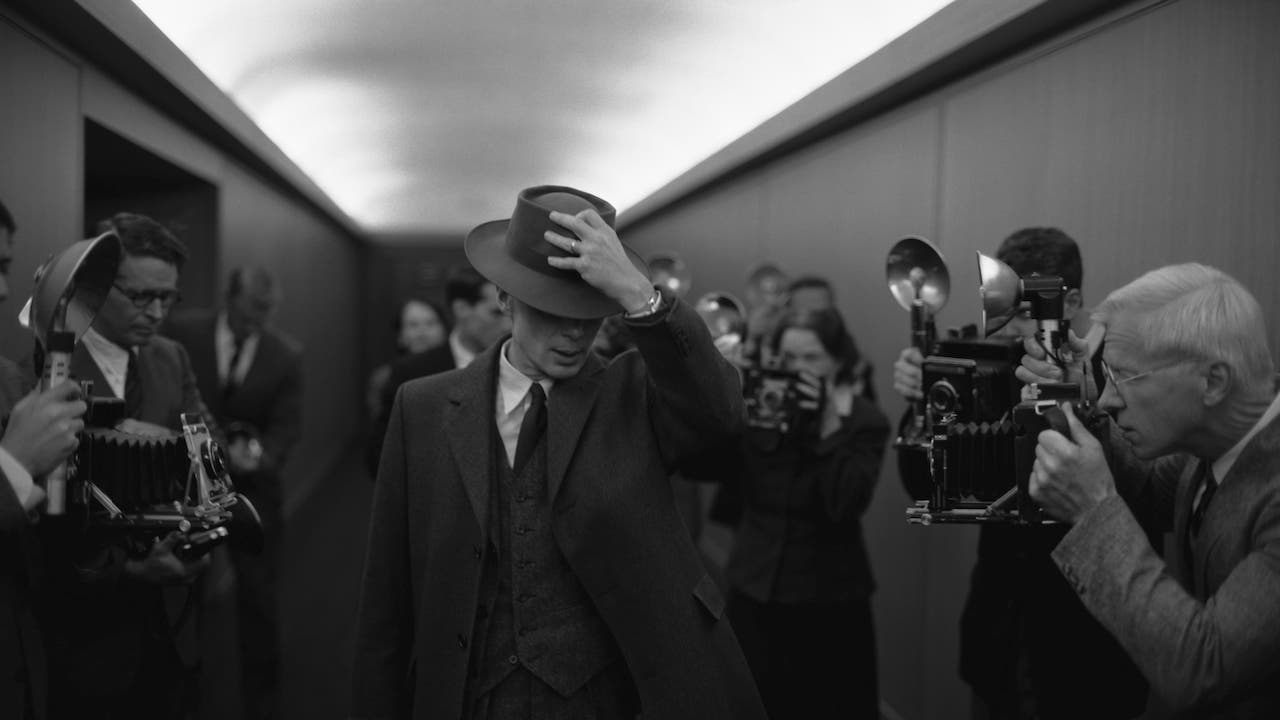
11. The author of the biopic that inspired the film has given his seal of approval
Written by Kai Bird and Martin J. Sherwin, American Prometheus: The Triumph and Tragedy of J. Robert Oppenheimer acted as the catalyst for Nolan in adapting the philosophical scientist’s life onto the big screen. The book won a 2006 Pulitzer for its clear-eyed compilation of a complex and history-making figure, and historian Bird is apparently still “emotionally recovering from” the film inspired by his work. Here’s his praise: “I think it is going to be seen as a stunning artistic achievement and I hope it will spark a national conversation about the issues Oppenheimer was desperate to talk about: how to live in the atomic age, and about McCarthyism — what it means to be a patriot, and what is the role of a scientist, in a society drenched with technology and science, to speak out about public issues.”
12. Nolan reckons you’ll be able to physically feel the film’s pivotal explosion
So here we are again: back at the big bang highlighted by all of Oppenheimer‘s promo material, the pivotal test explosion that paved the way for nuclear devastation in Hiroshima and Nagasaki. How on earth has Christopher Nolan captured the destiny-changing blast “without computer effects”?
Through sound and atmospheric visual effects, the director is aiming to deliver “an oversize impact for the audience—an almost physical sense of response to the film”. Sorry in advance to the movie theatre ushers who will have to suffer through this atomic impact a few times a day for the film’s 100-day theatrical release…
me and the girls watching barbie next door while the oppenheimer audience gets nuked pic.twitter.com/yFZ4boGTOu https://t.co/GUlFRNrAOJ
— maddy (@ruddrudd) June 10, 2023
We’ve often joked about Christopher Nolan’s movies being pretty difficult to hear, so maybe it’s only fair that his latest movie makes it difficult for us to hear anything at all after watching it. Now Chris has become death; destroyer of eardrums.





